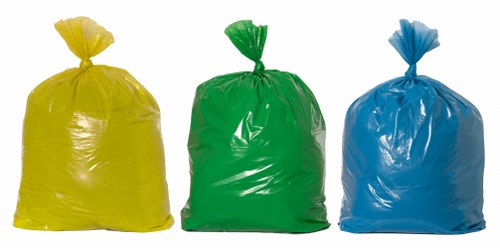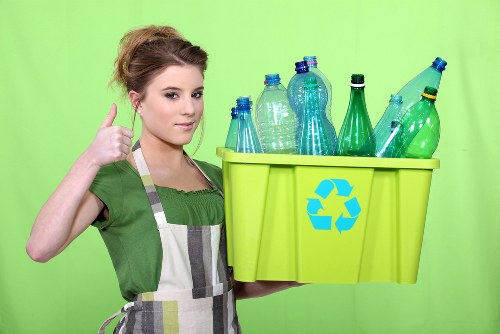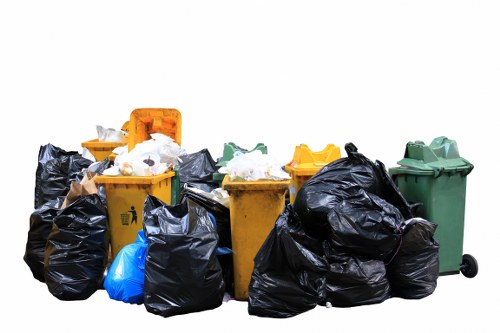Construction Waste Clearance in Victoria
Introduction to Construction Waste Clearance

Construction projects, whether large or small, inevitably generate a significant amount of waste. Proper construction waste clearance in Victoria is essential not only for maintaining a clean and safe worksite but also for adhering to environmental regulations and promoting sustainability.
Victoria has stringent guidelines and regulations to manage construction waste, ensuring that waste is disposed of responsibly and recycled wherever possible. Understanding these regulations and the best practices for waste clearance can help construction companies minimize their environmental impact and avoid potential fines.
Effective waste clearance involves a combination of proper planning, efficient execution, and innovative recycling methods. By implementing these strategies, construction projects can become more sustainable and cost-effective.
Types of Construction Waste

Construction waste can be broadly categorized into several types, each requiring specific disposal methods. The most common types include:
- Concrete and Masonry: These materials are heavy and can be recycled into new concrete products.
- Wood: Untreated wood can be reused or recycled, while treated wood requires special disposal methods due to chemical preservatives.
- Metals: Metals like steel and aluminum are highly recyclable and can be sold to recycling centers.
- Plastics: While some plastics can be recycled, others may need to be disposed of in landfills.
- Asbestos-Containing Materials (ACMs): ACMs are hazardous and require specialized handling and disposal procedures.
Proper identification and segregation of these materials at the construction site are crucial for effective waste clearance and recycling.
By categorizing waste, construction companies can streamline their waste management processes, reduce disposal costs, and enhance their sustainability efforts.
Regulations Governing Waste Clearance in Victoria

Victoria has established comprehensive regulations to manage construction waste, ensuring that waste disposal is conducted safely and responsibly. Key regulatory bodies include:
- Environment Protection Authority (EPA) Victoria: Responsible for enforcing waste management laws and providing guidelines for waste disposal.
- Victorian Building Authority (VBA): Oversees building and construction standards, including waste management practices.
- Local Councils: Each council may have additional requirements and permits for waste clearance activities.
Compliance with these regulations is not only a legal obligation but also a commitment to environmental stewardship and community responsibility.
Failure to adhere to waste management laws can result in substantial fines, project delays, and reputational damage for construction firms.
Best Practices for Construction Waste Clearance

Implementing best practices in construction waste clearance can significantly enhance the efficiency and sustainability of construction projects. Some of the recommended practices include:
- Waste Minimization: Plan projects meticulously to reduce the amount of waste generated. This includes accurate material estimation and efficient resource utilization.
- Segregation at Source: Separate different types of waste as they are generated to simplify recycling and disposal processes.
- Recycling and Reuse: Identify materials that can be recycled or reused, reducing the need for new resources and minimizing landfill usage.
- Proper Storage: Store waste materials in designated areas to prevent contamination and ensure safety.
- Engage Licensed Waste Carriers: Use authorized waste disposal services to ensure compliance with legal requirements and environmental standards.
Adopting these practices not only aids in regulatory compliance but also promotes a culture of sustainability within the construction industry.
Moreover, efficient waste management can lead to cost savings through reduced disposal fees and potential revenue from recycling initiatives.
Recycling and Disposal Options

Victoria offers various recycling and disposal options tailored to the different types of construction waste. Some of these options include:
- Recycling Centers: Facilities that accept a range of construction materials for recycling, such as metals, wood, and concrete.
- Landfill Sites: Designated areas for the disposal of non-recyclable and hazardous waste. It's important to follow specific guidelines when using landfills to minimize environmental impact.
- Specialized Disposal Services: For hazardous materials like asbestos, specialized disposal services are required to ensure safe handling and compliance with regulations.
- On-Site Recycling: Implementing on-site recycling initiatives can reduce the volume of waste that needs to be transported off-site, saving time and costs.
Choosing the right disposal method depends on the type and quantity of waste, as well as regulatory requirements. Collaborating with reputable waste management providers can help ensure that waste is handled efficiently and responsibly.
Additionally, exploring innovative recycling technologies can open new avenues for waste reduction and resource recovery.
Benefits of Professional Waste Clearance Services

Hiring professional construction waste clearance services in Victoria offers numerous benefits, including:
- Expertise and Experience: Professionals are well-versed in handling various types of construction waste and are familiar with local regulations.
- Time and Cost Efficiency: Outsourcing waste clearance allows construction companies to focus on their core activities while ensuring waste is managed effectively.
- Compliance Assurance: Professional services ensure that all disposal activities comply with legal requirements, reducing the risk of fines and penalties.
- Environmental Responsibility: Experts can implement sustainable waste management practices, contributing to environmental conservation efforts.
- Customized Solutions: Tailored waste management plans can address the specific needs of each construction project, enhancing overall efficiency.
Engaging with professional waste clearance services ensures that construction waste is managed in a safe, efficient, and environmentally friendly manner.
Moreover, it supports the broader goals of sustainability and responsible resource management within the construction industry.
Challenges in Construction Waste Clearance

Despite the benefits, managing construction waste clearance comes with its own set of challenges:
- Volume of Waste: Large construction projects can generate substantial amounts of waste, making efficient management critical.
- Hazardous Materials: Handling and disposing of hazardous waste like asbestos requires specialized knowledge and procedures.
- Regulatory Compliance: Keeping up with evolving regulations and ensuring compliance can be complex and time-consuming.
- Recycling Limitations: Not all construction materials are easily recyclable, posing difficulties in waste reduction efforts.
- Cost Constraints: Budget limitations may restrict the ability to implement comprehensive waste management strategies.
Addressing these challenges requires proactive planning, continuous education, and collaboration with waste management professionals.
By overcoming these obstacles, construction companies can enhance their waste management practices and contribute to a more sustainable industry.
Future Trends in Construction Waste Management

The landscape of construction waste clearance is evolving, with several emerging trends shaping the future of waste management in Victoria:
- Increased Recycling Initiatives: Advancements in recycling technologies are making it easier to process and reuse construction materials.
- Zero Waste Construction: A growing emphasis on zero waste projects aims to eliminate landfill contributions entirely through meticulous waste management.
- Digital Waste Tracking: Implementing digital tools for tracking waste generation and disposal enhances transparency and efficiency.
- Green Building Practices: Integrating sustainable materials and practices in construction reduces overall waste and environmental impact.
- Circular Economy Models: Emphasizing the reuse and recycling of materials promotes a circular economy, minimizing waste and resource consumption.
Staying abreast of these trends allows construction companies to adopt innovative waste management solutions, ensuring long-term sustainability and compliance.
Embracing these developments can also provide competitive advantages in the construction market, appealing to environmentally conscious clients and stakeholders.
Choosing the Right Waste Clearance Partner

Selecting a reliable and efficient waste clearance partner is crucial for the success of any construction project. When evaluating potential partners, consider the following factors:
- Licensing and Accreditation: Ensure the company holds the necessary licenses and certifications for waste management in Victoria.
- Experience and Expertise: Look for partners with a proven track record in handling various types of construction waste.
- Recycling Capabilities: Opt for companies that prioritize recycling and sustainable waste disposal methods.
- Customer Reviews and Reputation: Assess the company's reputation through reviews, testimonials, and references.
- Cost Transparency: Choose a partner that offers clear and competitive pricing without hidden fees.
By carefully selecting a waste clearance partner that aligns with your project's needs and sustainability goals, you can ensure efficient and responsible waste management.
Collaborating with the right partner also fosters long-term relationships, benefiting future construction projects with streamlined waste clearance processes.
Cost Considerations in Waste Clearance

Managing the costs associated with construction waste clearance is a key concern for many construction companies. Several factors influence these costs:
- Volume of Waste: The amount of waste generated directly affects disposal fees and transportation costs.
- Type of Waste: Hazardous and non-recyclable materials typically incur higher disposal costs compared to recyclable materials.
- Disposal Methods: Advanced recycling and sustainable disposal methods may have different cost structures.
- Transportation Distance: The distance between the construction site and the disposal facility can impact transportation expenses.
- Regulatory Fees: Compliance with local regulations may involve additional fees and permits.
To manage these costs effectively, construction companies should:
- Implement waste reduction strategies to minimize the volume of waste generated.
- Invest in recycling and reuse practices to take advantage of potential cost savings from reduced disposal fees.
- Negotiate competitive rates with waste clearance providers, ensuring transparency in pricing structures.
- Plan logistics efficiently to reduce transportation-related expenses.
By proactively addressing cost factors, construction projects can achieve effective waste clearance without compromising on quality or compliance.
Additionally, exploring government incentives and grants for sustainable waste management practices can further alleviate financial pressures.
Environmental Impact of Construction Waste
[IMG_11]Construction waste has a significant impact on the environment if not managed properly. Improper disposal can lead to:
- Landfill Overuse: Excessive waste contributes to the rapid depletion of landfill space, leading to increased environmental strain.
- Pollution: Hazardous materials can contaminate soil and water sources, posing risks to public health and ecosystems.
- Resource Depletion: Wasting recyclable materials contributes to the depletion of natural resources required for new construction.
- Greenhouse Gas Emissions: Decomposition of organic waste in landfills releases methane, a potent greenhouse gas.
Mitigating these impacts requires diligent waste management practices, including reducing waste generation, enhancing recycling efforts, and ensuring responsible disposal of hazardous materials.
By minimizing the environmental footprint of construction waste, the industry can contribute to broader sustainability goals and combat climate change.
Innovative Solutions in Waste Clearance
[IMG_12]Innovation plays a critical role in advancing construction waste clearance practices. Some of the cutting-edge solutions include:
- Modular Construction: Prefabricated components reduce on-site waste generation by minimizing material excess and errors.
- 3D Printing: Enables precise material usage, reducing waste and allowing for the recycling of unused materials.
- Smart Waste Management Systems: Utilize sensors and data analytics to monitor waste levels, optimize collection schedules, and improve overall waste handling efficiency.
- Biodegradable Materials: Development of eco-friendly construction materials that decompose naturally, reducing long-term environmental impact.
- Artificial Intelligence (AI) and Robotics: Employed for sorting and processing waste more accurately and efficiently.
Integrating these innovative solutions can significantly enhance waste management practices, making construction projects more sustainable and less resource-intensive.
As technology continues to evolve, the construction industry has the opportunity to adopt increasingly effective waste clearance methods, paving the way for a greener future.
Case Studies: Successful Waste Clearance in Action
[IMG_13]Examining real-world examples of successful construction waste clearance in Victoria can provide valuable insights and inspiration for future projects. Here are a few noteworthy case studies:
- GreenBuild Project: A high-rise construction project that implemented comprehensive waste segregation and recycling programs, achieving a recycling rate of over 70%.
- EcoVilla Development: Focused on zero waste principles, this residential project utilized modular construction techniques to minimize waste generation and collaborated with local recycling centers for material reuse.
- Heritage Restoration: A historic building restoration that required careful handling of materials like asbestos, successfully managing hazardous waste through specialized disposal services while preserving the building's integrity.
These case studies highlight the importance of strategic planning, collaboration with waste management professionals, and a commitment to sustainability in achieving effective waste clearance.
By learning from these examples, other construction projects can adopt similar strategies to enhance their waste management practices.
Conclusion
[IMG_14]Construction waste clearance in Victoria is a multifaceted process that requires careful planning, adherence to regulations, and a commitment to sustainability. By understanding the types of waste, complying with legal requirements, and implementing best practices, construction projects can effectively manage their waste, reduce environmental impact, and achieve cost efficiencies.
Embracing innovative solutions and partnering with professional waste clearance services further enhances the ability of construction companies to maintain clean and safe worksites while promoting environmental stewardship.
As the construction industry continues to evolve, prioritizing effective waste management will be essential in building a sustainable future for Victoria.
Contact us today to learn more about our professional construction waste clearance services and how we can support your next project.